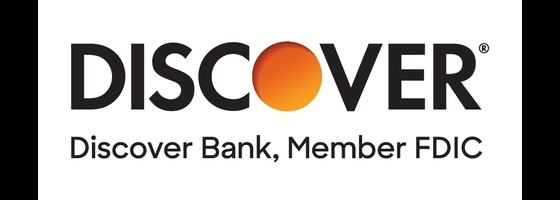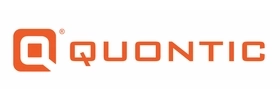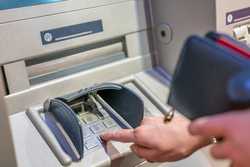5 Types of Savings Accounts to Save Your Money

Our evaluations and opinions are not influenced by our advertising relationships, but we may earn a commission from our partners’ links. This content is created by TIME Stamped, under TIME’s direction and produced in accordance with TIME’s editorial guidelines and overseen by TIME’s editorial staff. Learn more about it.
When you have cash to store, there’s arguably nowhere safer than a bank account in the United States. With funds in a savings account, you can earn interest while resting easy, knowing that the U.S. government guarantees to get your money back, up to FDIC insurance limits, in the unlikely event of a bank failure.
Whether you’re saving for an emergency fund, a down payment, or a rainy day, picking the right type of savings account can help you get the best results. Here’s a closer look at the types of savings accounts available and insights into finding the right one for your unique needs.
While savings accounts generally have common features—such as earning interest and being insured by the Federal Deposit Insurance Corporation, or FDIC—they’re not all exactly alike. Following are the most common types of savings accounts you’ll encounter at a bank or credit union.
A traditional savings account is a stable place to keep your cash. Just about every bank offers some form of traditional savings account. In most cases, you won’t earn the highest interest rate. Still, you will find useful banking features, including online banking, mobile banking, and in-person banking, if your financial institution offers branch banking.
If you’re considering a traditional savings account, it’s wise to shop around for the best interest rates and accounts where you won’t have to pay any fees. Many banks charge fees if you don’t maintain a certain minimum balance or meet other requirements. But they’re still useful for keeping cash separate from your checking account for specific purposes or to keep your savings at a bank where you have other accounts.
Or look into online savings accounts. They typically come with the lowest fees and excellent web and mobile banking experiences. The best online savings accounts have innovative features, such as the option of adding sub-savings accounts and flexible automatic savings plans. Because they don’t have the expense of maintaining branches, they sometimes offer more favorable interest rates and fee structures than traditional brick-and-mortar banks.
Popular traditional savings accounts exist at most banks, including Chase, First Citizens Bank, and U.S. Bank. Or check online savings accounts at CIT Bank and Quontic Bank.
Who wouldn’t want to earn the most possible money on their deposits? High-yield savings accounts offer some of the best interest rates for savings accounts. Depending on the bank, they may pay hundreds of times more than some traditional savings accounts. That’s not a big difference on smaller balances, but if you have thousands of dollars in savings, earning 100x the interest rate could be significant.
Many online-only banks offer high-yield savings accounts, though traditional branch banks often feature this type of account too. Again, pay close attention to interest rates and fees when signing up.
High-yield savings accounts are available from Discover® Bank, CIT Bank, and Live Oak Bank.
To bring young people in, many banks offer student savings accounts with lower minimum balance and fee requirements than traditional savings accounts. Student savings accounts are often a great way to teach kids about banking and build good savings habits. However, those added benefits don’t always last indefinitely.
But be aware that many student savings accounts come with time limits after which they become regular savings accounts. When that happens, minimum balance or activity requirements often kick in, or you’ll have to pay a monthly fee.
Student savings accounts are available at Chase Bank, Bank of America, and US Bank.
Money market accounts (MMAs) are savings accounts that combine checking and savings features. Most money market savings accounts offer the ability to write checks while earning interest rates comparable to a savings account. Money market accounts sometimes pay better interest rates than regular savings accounts.
Be aware that you may also find the term “money market” in the investment markets. Money market funds are investment funds that are not FDIC-insured and may lose value. A money market savings account is backed by FDIC insurance and works more like a traditional bank account.
CIT Bank, and Quontic Bank, offer some top money market accounts.
Certificate of deposit (CD) accounts are time-bound savings accounts that many banks offer. CD accounts typically pay interest rates above what you would earn from a traditional savings account, but you have to agree to put your funds into the account for a specific period of time. If you withdraw money before the CD matures, you’ll have to pay a penalty, usually a few months of interest.
In an economy where interest rates are falling, CD accounts allow you to lock in favorable interest rates for a longer term. But you could be locked into a rate below the market average when rates rise. Consider when you’ll need the funds and what direction you believe interest rates will go as you decide whether a CD is right for your cash.
4.00%
If you’re deciding between a regular savings account and other bank accounts, here’s how they compare head-to-head.
Checking accounts are transactional accounts where most people deposit their paychecks and pay bills and other common expenses. Consumer checking accounts generally allow you to make as many monthly deposits and withdrawals as you want without added fees. Checking accounts rarely pay interest. If they do, rates are usually very low. Savings accounts, on the other hand, pay interest but usually limit you to six withdrawals per month.
Money market and savings accounts pay interest and generally require that you make no more than six monthly withdrawals. The main advantage of MMAs is the ability to write checks, making them useful when saving up for a large purchase, like a down payment for a car. Depending on the bank, you could earn more interest with an MMA, but that’s not always true.
With savings accounts, you can withdraw funds at any time, though some banks limit you to six withdrawals per statement period. (Regulation D, which used to limit savings and money market accounts to those six monthly withdrawals, was withdrawn by the Federal Reserve Board in 2020.) With CD accounts, your money is locked away until maturity unless you pay a penalty. Another difference: CD account interest rates are locked in until maturity, while interest rates can change at any time with a savings account.
MMAs allow withdrawals at any time (unless the bank that holds them imposes limits) without penalty, but are subject to interest rate variability. CD accounts only allow withdrawals at the end of the CD’s maturity period, often one month to five years in the future. The interest rate won’t change until the maturity date. If you want to withdraw early, steep penalties may apply.
When saving, you may come across these similar alternatives to savings accounts. But it’s important to understand the differences.
Cash management accounts are a type of account sometimes offered by investment companies. Like money market accounts, they often combine checking and savings account features. However, they may not be FDIC-insured bank accounts, instead relying on other protections. Read the fine print.
An HSA is a highly tax-advantaged account designed to cover medical expenses. With an HSA, contributions are tax-free if you have an eligible high-deductible health plan. Qualified withdrawals are also tax-free. Funds must be used for eligible medical costs for this tax benefit.
The best HSAs include a savings account feature and allow you to invest in stocks or investment funds. Because you don’t have to reimburse yourself for medical expenses right away, you can also use an HSA as a long-term investment or retirement account. You'll be subject to taxes and penalties if you withdraw for purposes other than allowed medical costs.
Individual retirement accounts (IRAs) and Roth IRA accounts are retirement accounts with tax advantages. Some banks offer IRA or Roth IRA savings accounts, but you’ll usually find this type of account at an investment firm. Non-qualified withdrawals can lead to taxes and penalties.
For long-term investors with decades until retirement, a Roth IRA often serves you best when it’s used to buy investments, such as mutual funds and ETFs. For those closer to retirement, a traditional IRA can be the best financial decision.
529 plans are taxed-advantaged accounts used for education expenses. They can hold cash or investments in most cases. Withdrawals not used for qualified education costs are subject to added taxes and penalties.
There’s no perfect savings account for everyone, but you can likely find one or more that serve your financial goals. Many savvy savers have multiple savings accounts, sometimes held at multiple banks. With a keen eye on rates, fees, and account features, you’re best positioned to find the ideal savings account for your finances.
At almost all banks in the United States, your accounts are insured by the FDIC up to $250,000 per depositor per institution. You’ll find similar protection from the National Credit Union Administration (NCUA) at credit unions.
While some banks may limit the number of accounts customers can open, there’s no limit to the number of savings accounts you have in total. You can open accounts for specific savings goals or other needs.
Savings and investment accounts work differently. Savings accounts come with protections to ensure you don’t lose money. Investment accounts allow you to buy riskier investments that may offer higher returns, but there’s a possibility your account will lose value.
The information presented here is created by TIME Stamped and overseen by TIME editorial staff. To learn more, see our About Us page.





